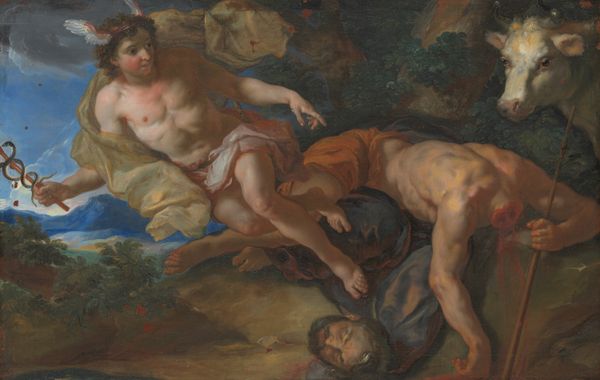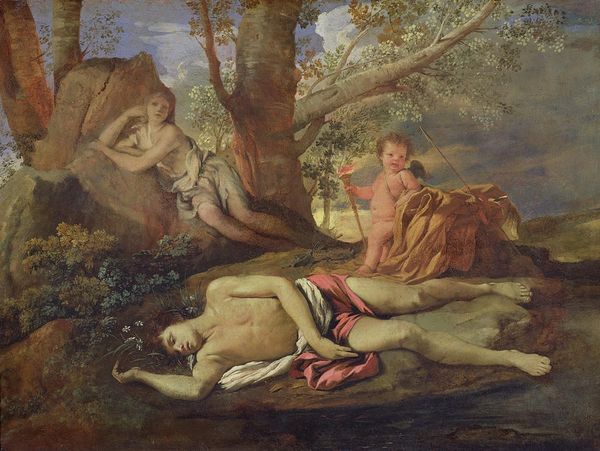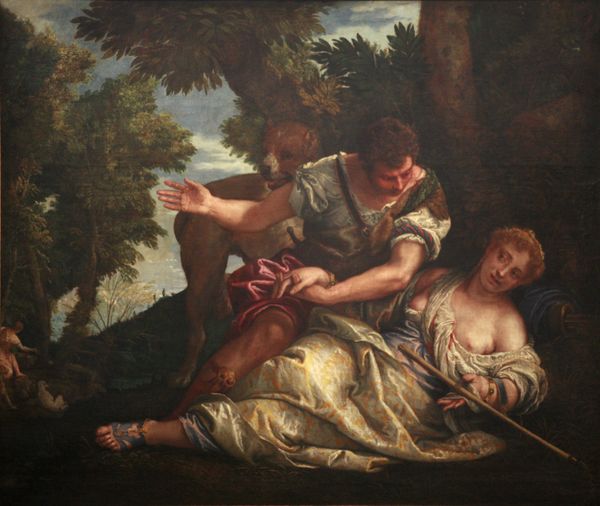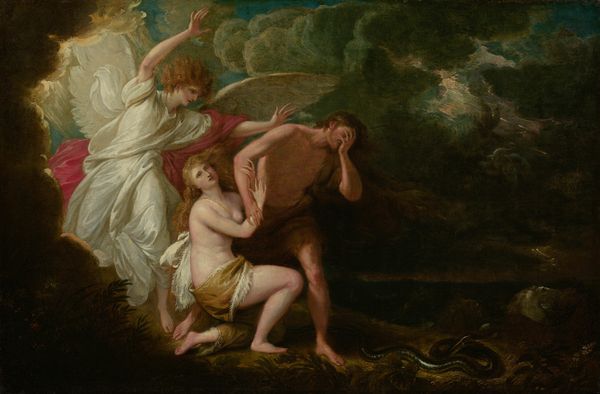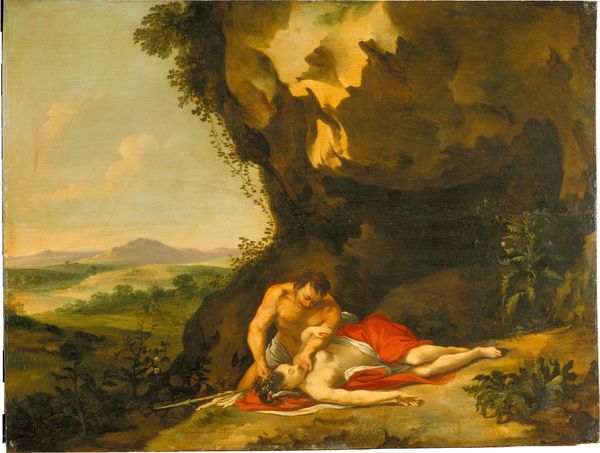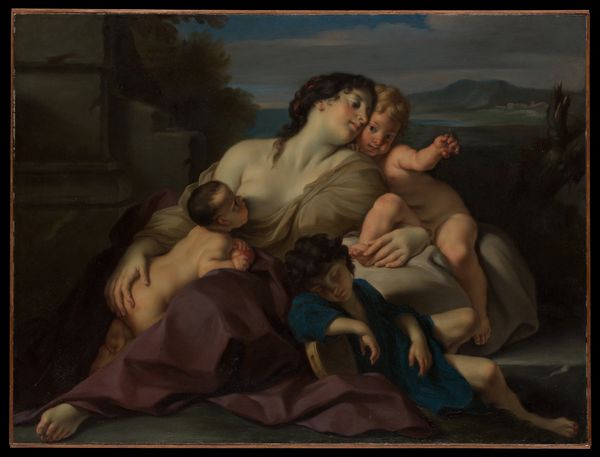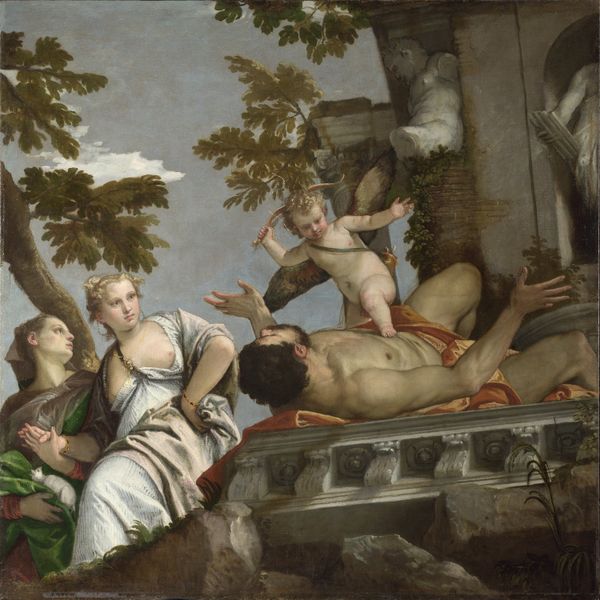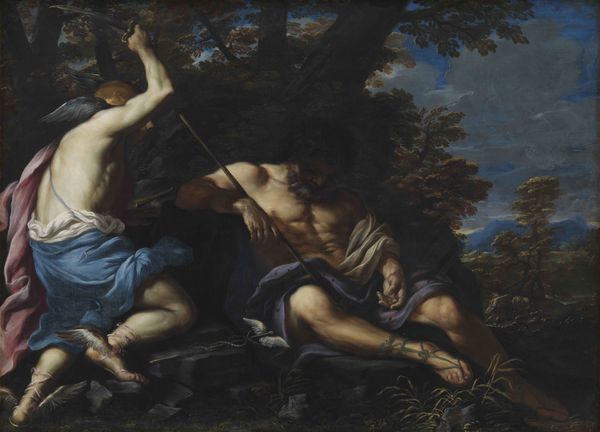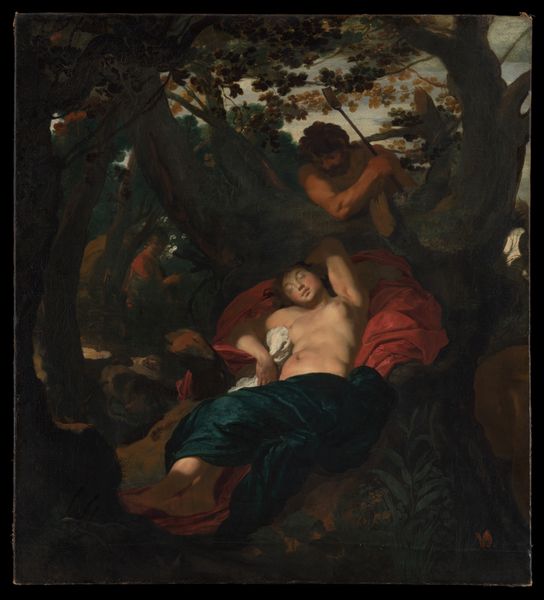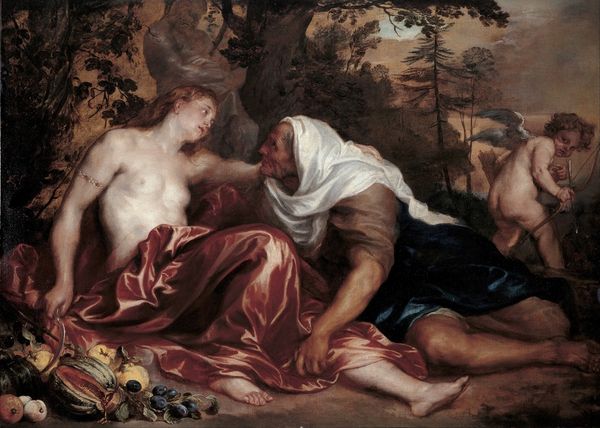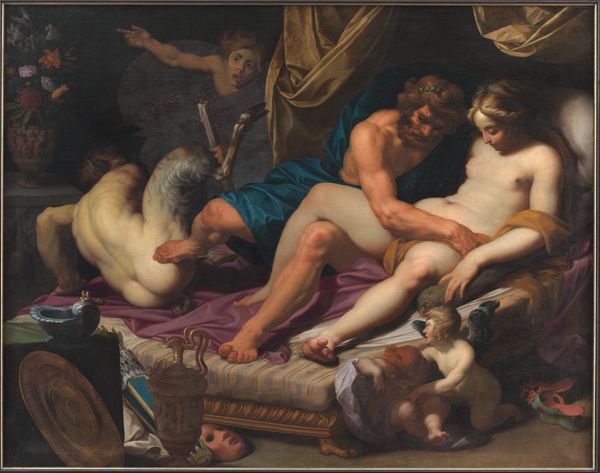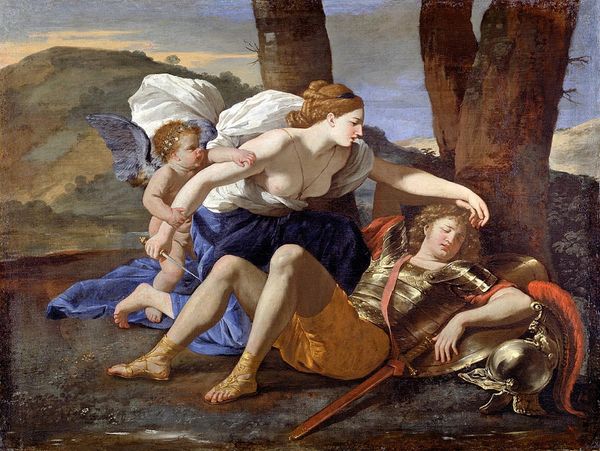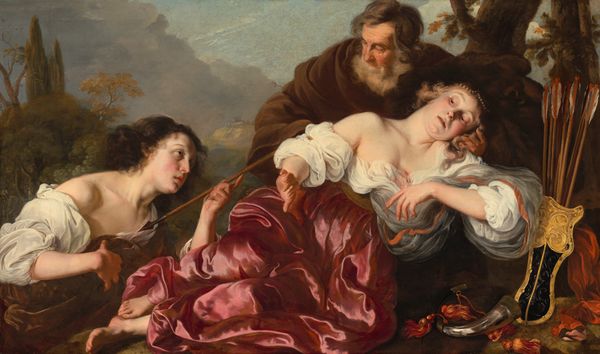
painting, oil-paint
#
allegory
#
baroque
#
painting
#
oil-paint
#
figuration
#
oil painting
#
history-painting
#
italian-renaissance
#
nude
Dimensions: height 42 cm, width 35 cm, depth 5 cm
Copyright: Rijks Museum: Open Domain
Curator: As we gaze upon Guercino's "Caritas," dating back to the period between 1610 and 1716 and currently held at the Rijksmuseum, we find ourselves contemplating an allegory of charity. Editor: Immediately, I’m struck by the almost unsettling contrast in the composition. The idealized mother-child tableau, all soft curves and muted tones, sits beneath a strangely muscular, airborne figure. The sheer muscularity clashes against the intimacy below, but it does offer dynamic diagonal. Curator: The work exemplifies a visual rhetoric very much aligned with the tastes of a Counter-Reformation viewership. Allegorical figuration as a mode offered visual vehicles through which virtue could be idealized. Motherhood as charity becomes very significant when we account for widespread social anxieties tied to questions of poverty, orphan-hood, and the redistribution of wealth across this period in European history. Editor: Precisely! I agree that the painting communicates a moral through contrasting the material with something almost sublime. I mean, notice how the flowing drapery wraps around her form, yet is rendered with incredible weight and dimension, the light just pools and settles there. It's all meant to visually uplift what might otherwise feel like an ordinary maternal act, transforming it into something transcendent. Curator: Certainly. Note also how it reflects prevailing understandings of idealised female bodies; yet the work, to a modern eye, might also cause a slight disquiet precisely in its formal address. This semi-nude Madonna-esque figure almost begs the question as to why this maternal ideal should necessarily entail revealing the very form of this nursing mother. These are considerations many 17th century audiences would have overlooked entirely. Editor: And just one final observation. The aerial figure appears almost secondary to the family depicted here. While it is easy to interpret that man as Zeus and understand that the image alludes to an epic tale of origin, there's an immediate tension, isn't there? We get something sacred out of these bodies, through simple observation. Curator: In "Caritas," Guercino delivers not merely a painting, but an encapsulation of a precise moment, where complex ideas surrounding ethics were beginning to be translated to and mediated in art and in life. Editor: Absolutely, this exploration revealed a wonderful combination of compositional and narrative contrasts and allowed us to unpack visual choices in surprising new ways!
Comments
No comments
Be the first to comment and join the conversation on the ultimate creative platform.
